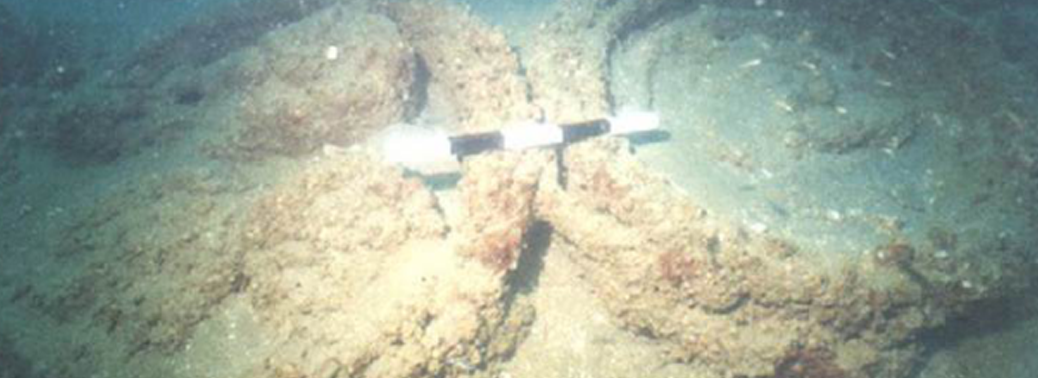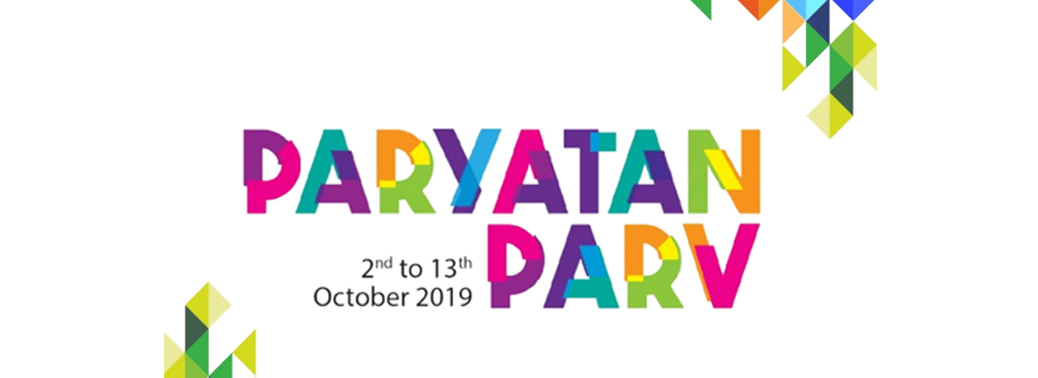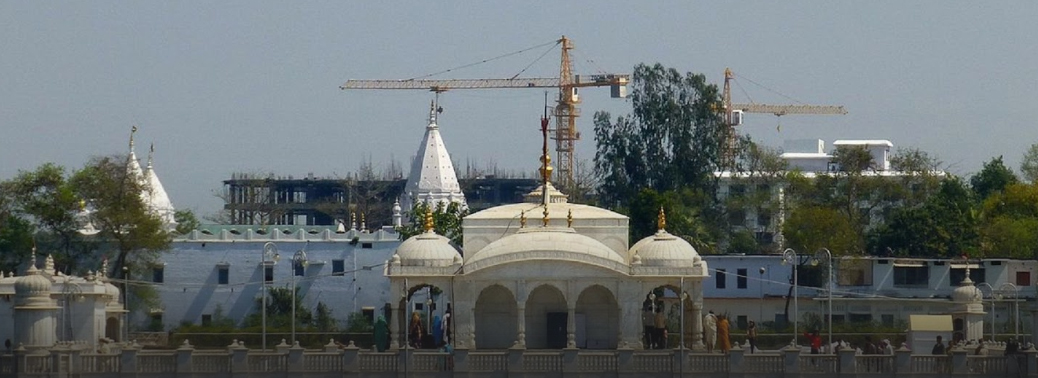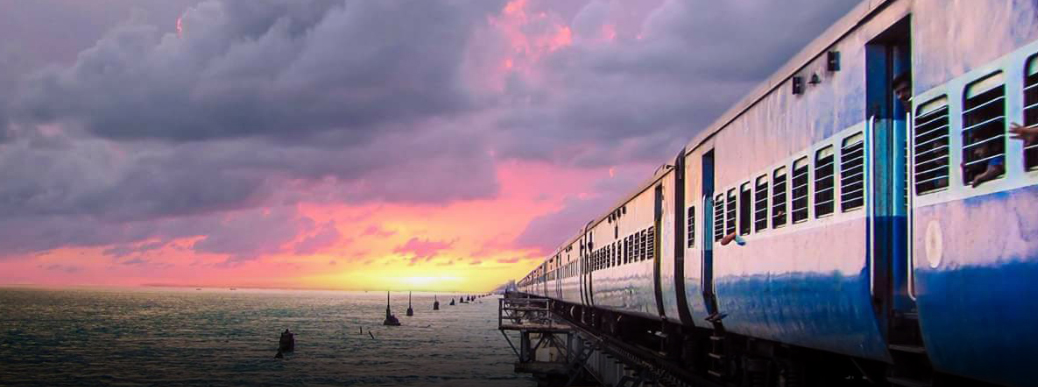Category: Heritage Tourism
PROJECT DIGITAL POOMPUHAR
04, Feb 2020

Why in News?
- The Department of Science and Technology (DST)has launched ‘Project Digital Poompuhar’ to recreate the Chola Dynasty port city (Poompuhar) in Tamil Nadu.
About Poompuhar:
- The Poompuharis mentioned in works of Sangam Tamil literature which refers to the city located 30 km from the existing Poompuhar town in southern Tamil Nadu.
- The port city flourished in inter-continental trade but shifted with time. Finally, it was re-established at the present location at the mouth of the river Cauvery around 3,000 years ago.
- The shifts took place due to the continuous “kadalkol” or rising sea levelsand the submergence of the deltas.

What does the Researches on Poompuhar says?
- The Indian Remote Sensing Satellites showed that the city was established initially in the Cauvery Delta about 30km away from the present Poompuhar town around 15,000 years ago.
- It had discovered a harbor like structure as well as sea walls and probably a bridge in the region.
- The study also provided insights about the life history and the social, cultural as well as technological evolution of Poompuhar. It also revealed the age of Poompuhar from 3000 years to 15,000 to 20,000 years.
- Despite several studies on Tamil literature, archaeology, underwater exploration and geosciences, the exact location of initial establishment of Poompuhar, its age, later shifts and the reasons and periods of its extinction, remained unresolved.
About Cholas:
- The Cholas controlled the central and Northern Parts of Tamil Nadu.
- Their core area of the rule was the Kaveri delta, later known as Cholamandalam. Their capital was Uraiyur (near Tiruchirapalli town) and Puhar or Kaviripattinam was an alternative royal residence and chief port town.
- Tiger was their emblem. The Cholas also maintained an efficient navy.
- King Karikala was a famous king of the Sangam Cholas.
- Many Sangam poems mention the Battle of Venni where he defeated the confederacy of Cheras, Pandyas and eleven minor chieftains.
- Trade and commerce flourished during his reign.
- He founded the port city of Puhar (identical with Kaviripattinam) and constructed 160 km of an embankment along the Kaveri River.
About Project Digital Poompuhar:
- The project involves Underwater Surveys and photographyby remotely operated vehicles and remote sensing-based geodynamic studies to bring out comprehensive information on the time series evolution and extinction.
- It also involves the visualisation of geodynamic processes of the last 20,000 yearslike land subsidence, sea-level rise, Cauvery’s migration, floods, tsunami, cyclones and Erosion.
- The study is also expected to provide Scientific Information not only on the life history of Poompuhar and the socio-cultural evolution but also the science and technological evolution and the disaster history of this region.
Is there Any Other Initiative to Revamp the Heritage Sites?
- India Digital Heritageis an initiative by the Department of Science and Technology in the areas of technology and humanities for digital documentation and interpretation of our tangible and intangible heritage.
- The project highlights art, architecture and cultural legacy of the world heritage site Hampi in Karnataka, the medieval capital of the Vijayanagara dynasty.
HARYANA’S JOHADS SET FOR REVAMP
27, Nov 2019

Why in News?
- Haryana’s Johads are all set for a revamp. The state government has come out with a plan of rehabilitating over 16,400 ponds in rural areas across the state in order to analyze pond water to ascertain its suitability for irrigation and other uses.
About:
- Johads are community-owned rainwater storage wetland mainly used for harnessing water resources.
- It is used in the state of Haryana, Rajasthan, Punjab, and western Uttar Pradesh.
- It collects and stores water throughout the year, to be used for the purpose of recharging the groundwater in the nearby water wells, washing, bathing and drinking by humans and cattle.
- Some johads also have bricked or stones masonry and cemented ghat.
- Other names of Johads (Haryanvi language and Rajasthani language) sarovar, taal and talab in Hindi language, and water pond or lake in English. Johads are called as khadin in Jaisalmer district.
Traditional Water Conservation:
- History tells us that both floods and droughts were regular occurrence in ancient India.
- Perhaps this is why every region in the country has its own traditional water harvesting techniques that reflect the geographical peculiarities and cultural uniqueness of the regions.
- The basic concept underlying all these techniques is that rain should be harvested whenever and wherever it falls.
- Archaeological evidence shows that the practice of water conservation is deep rooted in the science of ancient India.
- Excavations show that the cities of the Indus Valley Civilization had excellent systems of water harvesting and drainage.
- The settlement of Dholavira, laid out on a slope between two storm water channels, is a great example of water engineering.
- Chanakya’s Arthashashtra mentions irrigation using water harvesting systems.
- Sringaverapura, near Allahabad, had a sophisticated water harvesting system that used the natural slope of the land to store the floodwaters of the river Ganga.
- Chola King Karikala built the Grand Anicut or Kallanai across the river Cauvery to divert water for irrigation (it is still functional) while King Bhoja of Bhopal built the largest artificial lake in India.Drawing upon centuries of experience, Indians continued to build structures to catch, hold and store monsoon rainwater for the dry seasons to come.
- These traditional techniques, though less popular today, are still in use and Efficient.
Other Traditional Water Conservation Techniques:
- Zing – It is found in Ladakh, are small tanks that collect melting glacier water. A network of guiding channels brings water from the glacier to the tank.
- Kuhls – They are surface water channels found in the mountainous regions of Himachal Pradesh. The channels carry glacial waters from rivers and streams into the fields.
- Jack wells – The Shompen tribe of the Great Nicobar Islands uses this system, in which bamboos are placed under trees to collect runoff water from leaves and carries it to jack wells which pits encircled by bunds are made from logs of hard wood.
- Pat system – It is developed in Madhya Pradesh, in which the water is diverted from hill streams into irrigation channels by diversion bunds. They are made across the stream by piling up stones and teak leaves and mud.
- Eri – It is tank system, widely used in Tamil Nadu which acts as flood-control systems, prevent soil erosion and wastage of runoff during periods of heavy rainfall, and also recharge the groundwater.
- Zabo or Ruza System– It is practiced in Nagaland. Rainwater that falls on forested hilltops is collected by channels that deposit the run-off water in pond-like structures created on the terraced hillsides.
- Phad – It is a community-managed irrigation system in the tapi river basin in Maharashtra. It starts with check dam built across a river and canals to carry water to agricultural blocks with outlets to ensure excess water is removed from the canals.
- Panam keni – The Kuruma tribe (a native tribe of Wayanad) uses wooden cylinders as a special type of well, which are made by soaking the stems of toddy palms and immersed in groundwater springs.
- Ahar Pynes – They are traditional floodwater harvesting systems indigenous to South Bihar. Ahars are reservoirs with embankments on three sides and Pynes are artificial rivulets led off from rivers to collect water in the Ahars for irrigation in the dry months.
- Jhalara – Jhalaras are typically rectangular-shaped step wells that have tiered steps on three or four sides in the city of Jodhpur.
- Bawari – Bawaris are unique step wells that were once a part of the ancient networks of water storage in the cities of Rajasthan.
- Taanka – It is a cylindrical paved underground pit into which rainwater from rooftops, courtyards or artificially prepared catchments flows. It is indigenous to the Thar Desert region of Rajasthan.
- Khadin – Also called dhora, is a long earthen embankment that is built across the hill slopes of gravelly uplands. It is indigenous to Jaisalmer region and similar to the irrigation methods of Ur region (Present Iraq).
- Kund – It is a saucer-shaped catchment area that gently slopes towards the central circular underground well. It is found in the sandier tracts of western Rajasthan and Gujarat.
Why it is Needed?
- Water is a cyclic resource which can be used again and again after cleaning.
- The best way to conserve water is its judicious use.
- A large quantity of water is used for irrigation and there is an urgent need for proper water management in irrigation sector.
- In arid areas, wherever water has been brought for irrigation, saline and alkaline tracts have emerged, rendering the soil infertile.
- Wasteful use of water should be checked. Sprinkler irrigation and drip irrigation can play a crucial role in conserving scarce water resources in dry areas.
- Drip irrigation and sprinkles can save anywhere between 30 to 60 per cent of water.
- Only 0.5 per cent—nearly half of this in Maharashtra—is under drip irrigation and 0. 7 per cent under sprinklers.
- There is large-scale pollution of water as a result of industrialization and urbanisation. This trend has got to be checked.
- Although one-eighth of India is declared as food prone, there are several thousand villages in India which do not have potable Drinking Water.
- The basins should be treated as one unit for planning water utilization.
- Dry farming should be practiced in dry areas.
- The experimentation under the National Watershed Development Programme for Rainfed Agriculture is being carried on since 1986-87.
AUDIO GUIDE FACILITY APP “AUDIO ODIGOS”
04, Oct 2019

Why in News?
- On the second day of nationwide “Paryatan Parv 2019” Ministry of Tourism launched the Audio Guide facility Audio Odigos for 12 sites of India(including Iconic Sites).
Audio Guide- Audio Odigos:
- It is an app for the benefit of the tourists. Audio guide odigo offers Government of India verified content, with visuals & voice over support.
- With Audio Odigos, tourists will now enjoy a more enriching experience and take back historical insights of the Indian culture and heritage.
- The Audio Odigos app contains an inbuilt map of the site for a smooth navigation during the tour.Listeners will be offered various versions of history like Synopsis, Detailed History and Podcasts.The audio can be chosen in their preferred language & version of the history. Audio Odigos is now available for download on all Android and iOS supported mobile phones.Audio Guide facility Audio Odigos can be used in 12 sites that includes: Amer Fort, Rajasthan, Chandni Chowk, Red Fort, Purana Quila, Humayun’s tomb, Delhi, Fatehpur Sikri, Taj Mahal, Uttar Pradesh, Somnath and Dholavira, Gujarat, Khajuraho, Madhya pradesh, Mahabalipuram, Tamil Nadu and Mahabodhi Temple, Bihar.
‘Adopt a Heritage, Apni Dharohar Apni Pehchan’ Scheme:
- It is a scheme of Ministry of Tourism for development of Tourism Amenities. The project aims to develop synergy amongst all stakeholders and involves active participation of local communities / players to promote ‘responsible tourism’.
- It is a collaborative effort between the Ministry of Tourism, Ministry of Culture and Archaeological Survey of India (ASI) and State Governments / UT Administrations. It aims at involving public sector companies, private sector companies and corporate citizens/individuals to take up the responsibility for making our heritage and tourism more sustainable through development, operation and maintenance of world-class tourist infrastructure and amenities at ASI/ State heritage sites and other important tourist sites in India.
PARYATAN PARV 2019
03, Oct 2019

Why in News?
- Ministry of Tourism organised Paryatan Parv 2019, which will be held from 2nd to 13th October, 2019.
About Paryatan Parv:
- The idea of Paryatan Parv is to propagate the message of ‘DekhoApna Desh’, with the objective to encourage Indians to visit various tourist destinations of the country and also to spread the message of ‘Tourism for All’.Paryatan Parv 2019 is dedicated to 150th Birth Anniversary of Mahatma Gandhi. Paryatan Parv is being organized with the objective of drawing focus on the benefits of tourism, showcasing the cultural diversity of the country and reinforcing the principle of “Tourism for All”.
- The three components of Paryatan Parv, are:
- Dekho Apna Desh: To encourage Indians to visit their own country. In the run up to the parv, several activities have been organised across the Country like Photography contest covering tourism attractions and experiences, promotion on Social Media, Tourism related Quiz, Essay, Debate and Painting Competitions for Students. General public engagement for the event will be promoted through the MyGov platform.
- Tourism for All: Tourism Events at sites across all States in the country are being organised. The activities at these sites will include illumination in and around the Sites, Cultural Programmes of Dance, Music, Theatre, Story Telling, Sensitisation Programmes for Stakeholders around the Sites, Tourism Exhibitions, Showcasing Culture, Cuisine and Handicrafts / Handlooms, Guided Heritage Walks, etc.
- Tourism & Governance: Interactive Sessions & Workshops with Stakeholders on varied themes have been organised across the Country as a part of the Paryatan parv activities.
TITHANKAR CIRCUIT
25, Jul 2019

Why in News?
- Ministry of Tourism under the Swadesh Darshan Scheme has identified Tirthankar Circuit as one of the fifteen thematic circuits for development in the country. All the sites associated with Jainism are covered under this circuit.
Tithankar Circuit Project:
- Ministry has sanctioned the project “Development of Tirthankar Circuit: Vaishali-Arrah-Masad-Patna-Rajgir-Pawapuri-Champapuri in Bihar.
Swadesh Darshan Scheme:
- Swadesh Darshan Scheme – Integrated Development of theme-based tourist circuits is the flagship scheme of Ministry of Tourism for development of tourism infrastructure in the country.
- Under Swadesh Darshan Scheme Ministry of Tourism is developing critical tourism infrastructure in the country in a sustainable and inclusive manner to make India into a world class tourist destination.
- The focus under the scheme is to develop public facilities like last mile connectivity, Tourist reception Centres, Way side Amenities, Solid Waste Management, Illumination, Landscaping, parking etc. where Private Sector is not willing to invest.
Objectives of the scheme:
- Position tourism as a major engine of economic growth and job creation;
- Develop circuits having tourist potential in a planned and prioritized manner;
- Promote cultural and heritage value of the country to generate livelihoods in the identified regions;
- Enhance the tourist attractiveness in a sustainable manner by developing world class infrastructure in the circuit/destinations;
- Follow community-based development and pro-poor tourism approach;
- Create awareness among the local communities about the importance of tourism for them in terms of increased sources of income, improved living standards and overall development of the area.
- Create employment through active involvement of local communities;
- Harness tourism potential for its effects in employment generation and economic development.
- Make full use of the potential and advantages in terms of available infrastructure, national culture and characteristic strong points of each and every region throughout the country by development of theme-based circuits.
SWADESH DARSHAN SCHEME
05, Jul 2019

Why in News?
- Swadesh Darshan Scheme – Integrated Development of theme-based tourist circuits is the flagship scheme of Ministry of Tourism for development of tourism infrastructure in the country.
- Under Swadesh Darshan Scheme Ministry of Tourism is developing critical tourism infrastructure in the country in a sustainable and inclusive manner to make India into a world class tourist destination.
- The focus under the scheme is to develop public facilities like last mile connectivity, Tourist reception Centers, Way side Amenities, Solid Waste Management, Illumination, Landscaping, parking etc. where Private Sector is not willing to invest.
Objectives:
- Position tourism as a major engine of economic growth and job creation; Develop circuits having tourist potential in a planned and prioritized manner;
- Promote cultural and heritage value of the country to generate livelihoods in the identified regions;
- Enhance the tourist attractiveness in a sustainable manner by developing world class infrastructure in the circuit/destinations;
- Follow community-based development and pro-poor tourism approach;
- Create awareness among the local communities about the importance of tourism for them in terms of increased sources of income, improved living standards and overall development of the area.
- Create employment through active involvement of local communities;
- Harness tourism potential for its effects in employment generation and economic development.
- Make full use of the potential and advantages in terms of available infrastructure, national culture and characteristic strong points of each and every region throughout the country by development of theme-based circuits.
Swadesh Darshan Scheme
15, Jul 2018

Ministry of Tourism launched the Swadesh Darshan Scheme a Central Sector Scheme for integrated development of theme based tourist circuits in the country. It develop tourism related infrastructure and service in selected area.
Scheme Objectives:
- To position tourism as a major engine of economic growth and job creation.
- Develop circuits having tourist potential in a planned and prioritized manner.
- Promote cultural and heritage value of the country to generate livelihoods in the identified regions.
- Enhancing the tourist attractiveness in a sustainable manner by developing world class infrastructure in the circuit /destinations.
- Follow community based development and pro-poor tourism approach.
- Creating awareness among the local communities about the importance of tourism for them in terms of increased sources of income, improved living standards and overall development of the area.
- To create employment through active involvement of local communities.
- Harness tourism potential for its effects in employment generation and economic development.
- To make full use of the potential and advantages in terms of available infrastructure, national culture and characteristic strong points of each and every region throughout the country by development of theme based circuits.
- Development of tourist facilitation services to enhance visitor experience/satisfaction.
Funding:
- The Scheme is 100% centrally funded and efforts are made to achieve convergence with other schemes of Central and State Governments and also to leverage the voluntary funding available for Corporate Social Responsibility(CSR) initiatives of Central Public Sector Undertakings and Corporate Sector.
- Suitable Public Private Partnerships to be taken up for improved sustainability of the projects.
- A Special Purpose Vehicle (SPV) may be created for the purpose, wherever feasible.
- At present the duration of Swadesh Darshan Scheme is till the 14th Finance Commission Period i.e. March 2020.
Ramayana Express
10, Jul 2018

- The Indian Railways is introducing a special tourist train which will visit places associated with Hindu epic Ramayana.
- The Shri Ramayana Express will commence in New Delhi and travel from Ayodhya to Rameswaram.
- Tour package also includes destinations in Sri Lanka. Those who wish to continue the tour after Rameswaram will have to fly to Colombo from Chennai.
- Ramayana Circuit is one among the thirteen thematic circuits identified for development under Swadesh Darshan Scheme.
- There are15 destinations in the Ramayana Circuit in an effort to promote religious tourism. The destinations are chosen according to the places where Lord Ram is believed to have travelled across India www.modernpropertysolutions.com.
- The 15 destinations are — Ayodhya, Shringverpur and Chitrakoot in Uttar Pradesh, Sitamarhi, Buxar and Darbhanga in Bihar, Chitrakoot in Madhya Pradesh, Nandi gram in West Bengal, Mahendragiri in Odisha, Jagdalpur in Chhattisgarh, Bhadrachalam in Telangana, Rameswaram in Tamil Nadu, Hampi in Karnataka and Nashik and Nagpur in Maharashtra.
- By Swadesh Darshan Scheme, destinations under the circuit will be developed by bridging infrastructural gaps like provision of drinking water, accommodation facilities, etc. Then the 15 places will be connected to form a circuit.






